#joseph kohn
Explore tagged Tumblr posts
Text

Bad movie I have Chain Reaction 1996
#Chain Reaction#Keanu Reeves#Morgan Freeman#Rachel Weisz#Fred Ward#Kevin Dunn#Brian Cox#Joanna Cassidy#Chelcie Ross#Nicholas Rudall#Tzi Ma#Christoph Pieczynski#Julie Pearl#Godfrey#Gene Barge#Nathan Davis#Aaron Williams#Daniel H. Friedman#Johnny Lee Davenport#James Sie#Joan Kohn#Juan Ramírez#Nydia Rodriguez Terracina#Scott Benjaminson#Ned Schmidtke#Randall Arney#Noelle Bou-Sliman#Joseph F. Kosala#Ron Dean#Miguel Nino
4 notes
·
View notes
Text
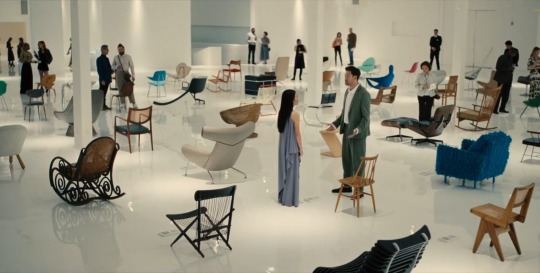
Beef - The Rapture of Being Alive (2023)
#beef netflix#ali wong#joseph lee#original#i think theres some modern thonets in there but im not equipped enough for that id#9#809#thonet#not even technically a thonet but a-#j&j kohn#model. this is the rocking chair on the far left btw#also that episode title goes hard af#not a thonet
18 notes
·
View notes
Text
Twenty One Pilots On Playing MTV Unplugged, Their Favorite Episodes And What They’re Doing Differently
The duo are the latest act to perform on the TV institution
Written By Daniel Kohn
MTV Unplugged performances, at least during its 1989-2001 heyday, were among the most watched and influential events in music programming. If you were on Unplugged, you made it. Though its influence has waned as artists have moved away from traditional television as a whole, the show’s legacy remains firmly intact. Now a quarterly event, MTV enlisted Twenty One Pilots as the next artist to perform on MTV Unplugged.
The show is unlike any other Unplugged predecessor. Tyler Joseph and Josh Dun don’t “unplug” in the traditional sense, but they stripped down their songs to create completely different versions than what’s made them radio staples in the past half-decade or so.
A day before they recorded their set in front of an intimate audience at Exchange in downtown Los Angeles, we caught up with the band for a quick chat at a nearby hotel where they broke down all things MTV Unplugged and what new wrinkles folks could expect on their episode.
SPIN: What does playing MTV Unplugged mean to you guys, considering the legacy and the history of the bands who have played it before?
Tyler Joseph: It’s pretty cool to be a part of it. I think that it’s got a long history of showcasing an artist or a band in a new way. On its surface, it feels like you should just be playing on an acoustic guitar. More than anything, this series has turned into being able to see an artist or a band in a different way than they traditionally present themselves. Taking an opportunity like this, to reinvent how we would present ourselves has been challenging, but also, in a sense, reminded us of why we love to play music. Sometimes you can get into this rut of just performing your shows the way that you’ve always performed them. And then when you’re forced to kind of rethink how to present them, you kind of fall in love with them into the songs all over again.
Josh Dun: MTV Unplugged has been such a cool form of discovery. People who talk about Unplugged will often reference a performance that actually got them into the band. It’s a cool way to get inside of an artist’s performance and see it in a different light.
How long does it take to rehearse and get a show like this prepped compared to like a regular performance?
Joseph: About a month and a half. It’s not like we’ve been rehearsing for that time, but mentally prepping. The concept that we’re applying to this is, it’s kind of unplugged, but it’s almost the opposite of unplugged, where we’re plugging in all of our instruments. Traditionally, Josh and I perform to pre-recorded tracks so that we can focus on our performance and connecting with the audience. What we’re going to do for MTV Unplugged is we’re actually going to build out and play each part of the track in real-time, looping and building out that track. By the end of the song, there will be new and different versions of our songs that’s never been heard before. There was a whole roadmap of “How do we pull this off? How do we learn the technology?” But then also, the creative side of what do we want these songs to become and making them sound really unrecognizable at first until we start saying the lyrics. It really took a lot of planning before we even got into rehearsing it. That’s why it took longer than you would think.
What was the first MTV Unplugged episode you watched as a kid?
Joseph: The Nirvana Unplugged. It’s crazy. Alice in Chains was amazing. More recently, I watched the Liam Gallagher one. It’s a long list of awesome artists and bands. And we’re excited to throw our hat into the ring.
Liam Gallagher one or the Oasis one?
Joseph: Liam, why what happened on the Oasis one?
[Shows them a video of Liam heckling Noel from the audience]
Joseph: Maybe that’s how we’ll open our set. I’ll start in the balcony.
Dun: Perfect!
How did you decide on that one?
Joseph: When the music video was released, it was at a pivotal moment in our career. We were still very much a local band, and seeing that video just rocked us. When that song came out, right around the time where we really put our heads down and decided we’re going to do this thing [the band]. The timing of it has always been a part of our journey, so we thought it was cool to commemorate that.
#twenty one pilots#twentyonepilots#josh dun#joshua dun#tyler joseph#interview#text#mtv#mtv unplugged#spinmag#spin mag#spin magazine#daniel kohn#june#2022#june 2022#june 9#june '22
6 notes
·
View notes
Link
A voice of integrity
#Canada#Ottawa#parliament#Rabbi Joseph Kohn#Gaza#genocide#condemnation#religion#press conference#remembrance
0 notes
Text

Calaveras de Matemáticas 2023
I like my last sketch for #mathober to be a memorial for Día de los Muertos. I'd say inspired by Posada, but that would be insulting him!
In the past year we lost Evelyn Boyd Granville, one of the pioneering Black women mathematicians of NASA. I thought Vicky Neale, lost too soon, would enjoy talking to her about women in math as she was a great advocate.
Louis Nirenberg and Joseph Kohn were collaborators in complex analysis.
Thomas Romberg, math teacher educator and organizer, is celebrating this great collection exemplifying one of his great maxims, that math is a human activity.
Looking down on them is the only one of these I got to meet, Eugenio Calabi. Great geometer and an amazing gentleman. He'd even talk to lowly grad students if they were talking about a good problem. I loved hearing him and Toby Colding discussing math way above my paygrade.
Grant eternal rest unto them, Oh Lord, and may perpetual light shine upon them.
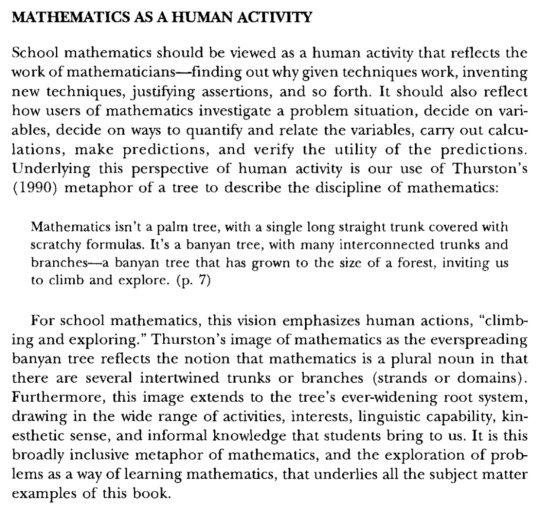
13 notes
·
View notes
Video
youtube
☀️ Top 3 Most Luxurious Towers in Miami ☀️
🗝️🏝 Welcome to Miami, the city of sun, style, and soaring luxury towers! Today, we're counting down the top 3 most luxurious towers set to redefine upscale living in Miami. From iconic fashion brands to world-class hospitality, these developments are pushing the limits of what luxury truly means. Let's dive in! 🗝️
🏝Number 3: Dolce & Gabbana Residences Brickell
Coming in at number 3 is the Dolce & Gabbana Residences Brickell, a stunning fusion of Italian craftsmanship and contemporary Miami flair. Standing at an impressive 1,049 feet tall, this tower is the tallest in Miami. The residences feature one-of-a-kind interior designs by Studio Sofield, with private residences ranging from one to four bedrooms, starting at $1.8 million.
Number 2: Four Seasons Coconut Grove
In second place, we have the Four Seasons Residences Coconut Grove. With just 70 meticulously crafted units across 20 stories, this exclusive tower brings a new level of elegance to one of Miami's most beloved neighborhoods. Developed by CMC Group and Fort Partners, this is Four Seasons' first standalone residential building in Florida.
Number 1: The Residences at Mandarin Oriental, Miami
And finally, at the top of our list, we present the Mandarin Oriental Residences in Brickell. Developed by Swire Properties and designed by Kohn Pedersen Fox, these 80-story towers are a masterpiece of modern architecture and luxury. The taller of the two towers reaches a dizzying 800 feet and will offer 220 exclusive residential units.
See More : https://newconstructionsouthflorida.com/south-florida-trending-news/top-3-most-luxurious-towers-miami/
=+=+=+=+=+=+=+=+=+=+=+=+=+=+=+=+=+=+=+=+=+=+=+=+=+=+=+=+=+=+ 📍🏠🏖 RESERVE TODAY FOR BEST AVAILABILITY FRIENDS AND FAMILY PRICING CALL/TEXT JOSEPH GHANIME 7868773338 Miami Dream Properties. CALL/TEXT 7868773338; 7 days a week....
#youtube#TopLuxuryTowersMiami LuxuriousTowersMiami DolceGabbanaResidences FourSeasonsCoconutGrove MandarinOrientalResidences LuxuryLivingMiami Bricke
0 notes
Text


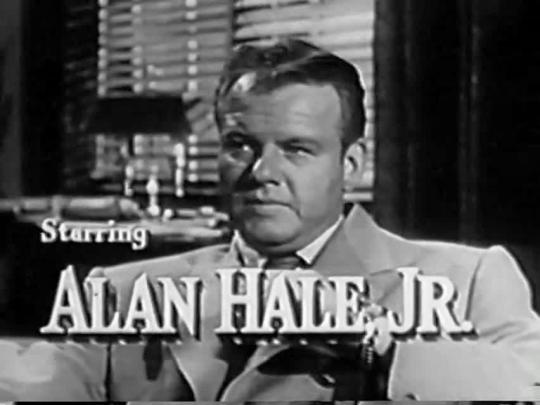







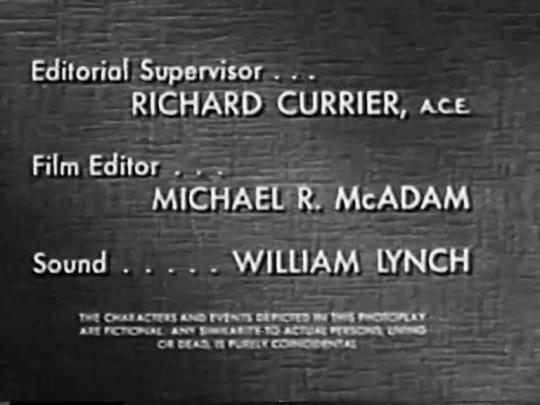
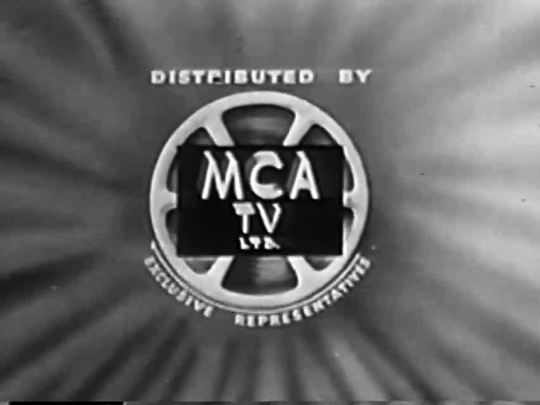



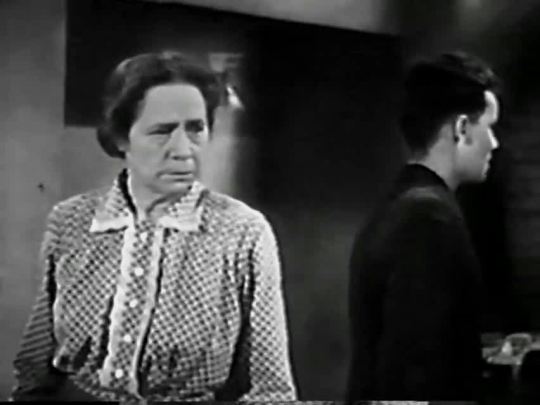

From the Golden Age of Television
Season 1 Episode 2
Biff Baker, U.S.A. - Grey Market - CBS - November 13, 1952
Action Adventure
Running Time: 30 minutes
Written by Alan Woods, John Kohn and Fenton W. Earnshaw
Produced by
Directed by Richard Irving
Stars:
Alan Hale Jr. as Biff Baker
Randy Stuart as Louise Baker
Peter Miles as Joseph
Rex Evans as Tom Davenport
Jay Novello as Maurice
Lisa Golm as Anna
Gabriel Curtiz
Hans Herbert
#Grey Market#TV#Biff Baker U.S.A.#Action#Adventure#1950's#1952#CBS#Alan Hale Jr#Randy Stuart#Peter Miles#Rex Evans#Jay Novello#Lisa Golm
1 note
·
View note
Text
November 1, 2023
CNN Astrophysicist explains why dinosaurs died when crocodiles survived (Editor's Note: Turns out the dinopioids were far more life-threatening than the crocoshits.)
Washington Post Democrats quickly seek to make Speaker Johnson a boogeyman (Editor's Note: That's not a big leap.)
Washington Post Trump grouses that his indictments took years. Here's why that is. (Editor's Note: Trump is unhappy it took so long to indict him? Imagine how the rest of us feel!)
NY Times How to Fall Back Without Missing a Beat (Editor's Note: Good grief. As they say at Nike, "Just Do It!")
NY Times X Says It Is Worth $19 Billion, Down From $44 Billion Last Year (Editor's Note: Really showing the ol' Midas Touch there, eh Elon?)
NY Times Joseph J. Kohn, Who Broke New Ground in Calculus, Dies at 91 (Editor's Note: When you look at the sum of his life's accomplishments, he was a guy who really made a differential.)
CNN DoorDash is testing warnings about bad service if you don't tip your driver (Editor's Note: Threatening customers in order to get tips. That sounds like a winning long-term strategy.)
CNN Brooke Shields says she had a seizure and woke up to Bradley Cooper holding her hand (Editor's Note: Is that best described as a seizure, or a fantasy?)
CNN Energy company pulls the plug on two major offshore wind projects on East Coast (Editor's Note: A spokesperson said it was "a gusty--I mean gutsy--decision.")
NY Times It Might Be Time to Consider Timisoara (Editor's Note: Sad to see such an egregious typo in the newspaper of record. Clearly that is supposed to be "Timiso'mara.")
Washington Post Trump Jr. testifies, deflects responsibility in N.Y. business fraud case (Editor's Note: What, you were thinking anyone named Trump would have a sense of personal accountability? That's a genetic impossibility.)
Washington Post What's on your pay stub? (Editor's Note: As my father used to say, "not quite enough.")
0 notes
Text
Antonio Velardo shares: Joseph J. Kohn, Who Broke New Ground in Calculus, Dies at 91 by Kenneth Chang
By Kenneth Chang The techniques he developed in the field of complex numbers have found use in tackling a wide range of fundamental equations in physics. Published: October 24, 2023 at 04:21PM from NYT Science https://ift.tt/Cm2YAXg via IFTTT

View On WordPress
0 notes
Text

Famous 1927 births.
Barbara Rush (American actress)
Eartha Kitt (American actress & singer)
Lewis Urry (Canadian-American engineer & inventor)
George Taliaferro (American football player)
Harvey Korman (American actor & comedian)
Sidney Poitier (American-Bahamian actor & ambassador)(pictured)
Roy Kohn (American lawyer)
Ralph Stanley (American singer & banjo player)
Harry Belafonte (American singer & actor)
Pope Benedict XVI (German pope)(Pictured)
Trudi Birger (German-Israeli holocaust survivor & writer)
Albert Uderzo (French cartoonist)
Coretta Scott King (American writer & activist)
Mort Sahl (Canadian-American comedian & political commentator)
Al Hedison; Jr. (American actor)
Norman Walker (American actor)
Jerry Stiller (American comedian & actor)(pictured)
Slim Dusty (Australian singer & guitarist)
Luigia Lollobrigida (Italian actress)
Jeannette Brandt aka Janet Leigh (American actress & singer)
Leonard Kelly (Canadian hockey player & politician)
Nan Martin Gesner (American actress & comedian)
Robert Shaw (British-Irish actor)
Freddie Jones (British actor)
Peter Falk (American actor)
Rosemary Harris Ehle (British actress)
Nick Massi (American singer & guitarist)
Tom Bosley (American actor)
Ibsen Elcar (American actor)
Sir Roger Moore (British actor)
George C. Scott (American actor)
Oscar Furlong (Argentine basketball & tennis player)
Steve Ditko (American cartoonist)
Yamauchi Hiroshi (Japanese businessman)
Estelle Parsons (American actress)
Cardinal Angelo Sodano (Italian Catholic cardinal)
Robert Guillaume (American actor & singer)
Joseph Pelletier (Canadian hockey player & scout)
Dr. Robert Noyce (American physicist & businessman)
#Religion#Germany#Vatican City#Celebrities#Movies#Colorado#Music#TV Shows#South Carolina#Connecticut#Canada#Ontario#Ohio#Sports#Football#Tennessee#Illinois#Politics#Florida#The Bahamas#Maryland#Virginia#Books#Israel#Comics#France#Alabama#Mexico#Quebec#Rhode Island
0 notes
Text
Musical Monday: Rhythm and Blues Revue (1955)
It’s no secret that the Hollywood Comet loves musicals. In 2010, I revealed I had seen 400 movie musicals over the course of eight years. Now that number is over 600. To celebrate and share this musical love, here is my weekly feature about musicals. This week’s musical: Rhythm and Blues Revue (1955) – Musical #732 Studio: Studio Films Inc. Director: Joseph Kohn Starring: Host: Willie…

View On WordPress
0 notes
Photo

THE ART OF ART Myself and over 100 artists will be participating in this massive group project curated by @mikecuffe of @warholian this Saturday ( 8/14) night at @moderneden in SF. Swing through! On View: August 14–September 1 Opens: Saturday August 14, 6–9 pm The Art of Art focuses on works that explore the tools and imagery of the visual arts. From paintbrushes to color wheels, this immersive show celebrates the artist in the studio and the world of the painter, the sculptor, and beyond. The Art of Art turns the mirror on the artist, exploring the very foundations of what has made the visual medium succeed for centuries. Featuring works by: Adam Caldwell, Adam Ziskie, aica, Alec Huxley, Allison Reimold, Amandalynn, Andrea Guzzetta, Arik Ehle, Aunia Kahn, Caia Koopman, Carly Janine Mazur, Catherine Moore, Charles Keiger, Cody Seekins, Cucueco, Daniel Chen, Daniel Valadez, Daria Theodora, Daryll Peirce, David Natale, D Young V, Diana Ormanzhi, Emily Fromm, Fafi, Felicia Ann, Gigi Chen, Gina Altadonna, Glenn Arthur, Grace Wang, Happy D, Helice Wen, Holly Matthews, Howard Lyon, Isabel Samaras, Jaclyn Alderete, Jana Brike, Jane Lee, Jessica Sillus, Jessica So Ren Tang, Jodie Herrera, John Casey, John Osgood, John Walker, Joseph Lorusso, Josh Thurman, Joshua Coffy, Joshua Lawyer, Julie Filipenko, Juliet Schreckinger, Kelly McKernan, Kelsey Bowen, Kierstin Young, Kim Leutwyler, Kremena Chipilova, Lacey Bryant, Lana Kohn, Lara Dann, Laura Colors, Lauren Saxton, Leilani Bustamante, MJ Lindo-Lawyer, Mandy Tsung, Mara Bubblegum, Marcos Lafarga, Margaret Morales, Maria Carmela, Marie-Eve Proteau, Mark Bryan, Maryam Gohar, Michael Camarra, Olympia Altimir, PX Miranda, Ransom & Mitchell, Raul D’Mauries, Raúl Guerra, Regina Sattarova, Richard Ahnert, Ricky Watts, Robin Galante, Sarah McCloskey, Skye Becker, Sofia Venegas, Spencer Keeton Cunningham, Stacy Ransom, Steve Hughes, Steve Javiel, Steven Kenny, Sybiline, Sylvia Ji, Terry Ribera, Thomas Ascott, Tosin Kalejaye, The Obanoth, The Tracy Piper, V R Rivera, Valeriya Volkova, Xhanthi, Yamakawa, Young Ji Cha, Zarina Situmorang, Zelyss, and more. #moderneden #mikecuffe #warholian #theartofart #tenderliundreaming (at Modern Eden Gallery) https://www.instagram.com/p/CSiDB_Ipr4Q/?utm_medium=tumblr
2 notes
·
View notes
Photo










Inside of a 300-Year-Old Belgian Château
The designer’s thoughtful renovation for an art-collecting family balances old-world grandeur with chic modernity
Old houses need a lot of love and often considerable repair. When the home is an early-18th-century, 20,000-square-foot Belgian château with ten bedrooms requiring a top-to-tail renovation, it’s not for the faint of heart. Luckily, Nathan Litera, the young French interior designer tasked with the project, has the dual traits of imagination and savoir faire in spades.
His clients wished not only to bring back the grandeur of their faded property but also to inject it with much-needed modernity and sophistication, while making it a comfortable family home. A critical part of the revamp was creating a radiant setting for the owners’ thought-provoking art collection, which spans eras and mediums—from an abstract painting by Jean Dubuffet and a conceptual canvas by John Baldessari to a tantalizing bronze mask by Thomas Houseago.
“This is a historic house. It called for very intricate paneling, millwork, decorative paint, and wood floors close to the French Haussmann style,” the homeowner explains. “In Belgium we don’t have this tradition in the architectural scene. Our style is far more minimal, and the contractors don’t have the know-how that the French do, which is why we brought in Nathan.”
Litera, who was born in Paris and grew up in the West Indies, certainly had the right credentials for the ambitious project. A trained architect, he worked for the esteemed firm Kohn Pedersen Fox Associates (now KPF) in New York and the cutting-edge Ateliers Jean Nouvel in Paris before teaming up with Parisian architect Joseph Dirand, for whom he designed interiors and furniture. In 2014, Litera launched his own practice with his business partner and wife, Lyatt Samama, and has quickly become highly sought after. To date, his wide-ranging commissions have included a Central Park duplex, a Hamptons tennis cabana, and a Left Bank townhouse. He completed a dazzling makeover of the soigné Manhattan restaurant Spring Place last winter, just a couple of weeks before the COVID-19 pandemic locked down the city. His first furniture line and showroom will debut in 2021.
When it came to updating the historic residence, Litera faced several obstacles, not least of which were restrictions concerning changes to landmark buildings. The proportions of the windows couldn’t be altered, for starters. In the entrance hall, a green stone fireplace had to stay, as did the carved-wood stair rail, which Litera modernized by painting dark brown. “One of the challenges was to have a dynamic vibe, while remaining faithful to the heritage of the château,” he says. “We had constraints, and yet we could find harmony within that framework.”
For the entry, Litera conceived a modern-day reception gallery in black-and-white chic, mixing standout midcentury furnishings with pieces by up-and-coming European designers. The grand curve of the staircase shelters a nearly nine-foot-long bench by George Nakashima paired with one of Christian Boltanski’s haunting installations depicting the faces of Holocaust victims. Across the room, large-scale paintings by Georg Baselitz and Marisa Merz join an Ado Chale table, whose aluminum top catches the glint of a 1950s chandelier by Holger Johansson.
Litera took two very different directions in the private quarters of the residence. For the family rooms, he hewed to classical French elements—employing herringbone wood floors, plaster walls and moldings, and decorative painting details throughout, while keeping the overall feel clean and modern. Art helps to loosen things up in the formal dining room, where gold-painted moldings amplify a series of Günther Förg abstract paintings. Ditto the breakfast room, which pairs choice Pierre Jeanneret cane chairs and a Geoffroy Van Hulle white stone table with provocative canvases by Baldessari and Sterling Ruby.
Indoors and out, the refreshed château seamlessly melds past and present, as classical refinement peacefully coexists with contemporary ease. “It’s tricky to do a historical building for modern use,” Litera admits. “You have to respect the heritage and at the same time be able to entertain children.” The ultimate triumph, he says, is “when you have babies running around in one room and a formal dinner going on next door.”
6 notes
·
View notes
Text
Intro to IR: Answering Question
Aslam Luqman Diaz-072011233076-USA
Nationalism is an ideology based on the premise that the individual’s loyalty and devotion to the nation-state surpass other individual or group interests. Nationalism is a modern movement. Throughout history people have been attached to their native soil, to the traditions of their parents, and to established territorial authorities, but it was not until the end of the 18th century that nationalism began to be a generally recognized sentiment molding public and private life and one of the great, if not the greatest, single determining factors of modern history. Because of its dynamic vitality and its all-pervading character, nationalism is often thought to be very old; sometimes it is mistakenly regarded as a permanent factor in political behaviour (Kohn, hans, 1949-1962).
National character is an expression which describes forms of collective self-perception, sensibility, and conduct which are shared by the individuals who inhabit modern nation-states. It presupposes the existence of psychological and cultural homogeneity among the citizens of each country, as well as the idea that each nation can be considered a collective individual, with characteristics analogous to the empirical individuals who are its inhabitants. The noun character seeks to describe a universal aspect of social life-an internal dimension to the existence of individuals and an external one, observable through collective behaviour. The adjective national situates this universal aspect of social life in the specific context of those social units we call nations. Social theory interested in understanding the social force of feelings of national belonging has turned once again to this expression, which was first formulated in Europe during the second half of the eighteenth century. What distinguishes this trend is the fact that there is no attempt at attributing any theoretical status to national character; instead, it is more concerced with it as a practical category used in the discourse and action of the social agents and groups. The aim of this article is to summarize the genealogy of the expression and to discuss its current heuristic value (Neiburg, 2001).
One can differentiate between hard and soft power tools in international relations. Traditionally, the states opted for hard power tools in the framework of realpolitik thinking. Meanwhile, the scholars and practitioners start to recognize that the world is in need of a shift from old assumptions and rigid distinctions about ‘hard’ and ‘soft’ power since the economic and political challenges can no longer be simply resolved by military power or policy innovation (Bound, et al. 2007: 13). However, the concept of soft power, initially introduced by Joseph Nye (1990), is still in its theorization process and requires further studies. Hence, the aim of this paper is to evaluate the concept of power, with specific reference to Nye’s frames: hard, soft, and smart. The research objectives are three-fold; first, to provide an brief overview of the concept of power in international relations, second, to evaluate some of the key issues pertaining to the concept of soft power and, third, to assess education as a tool of power. This paper is based on the on-going research for the author’s Ph.D. dissertation.
The subject of power has been an interest of social scientists for many decades, if not centuries, if one were to go back to writings of Aristotle, Plato, and Machiavelli. Despite such great deal of attention, however, there are still notable academic debates over power’s specific definition and its features, which lead to the topic’s complexity and ambiguity. In discussing power, it is important to note whose power one is referring to. For instance, Arendt (1970: 44) defined power not as the property of an individual, but rather 2 argued that it belongs to a group and remains in existence only so long as the group keeps together. Meanwhile, Dahl (1957: 203) proposed to call the objects in the relationship of power as actors. The term actor is inclusive and may refer to individuals, groups, roles, offices, governments, nation-states, or other human aggregates. One of the most influential definitions of power in the field of social science belongs to Max Weber (1947: 152) who defined it as the probability of one actor within a social relationship to be in a position to carry out his own will despite resistance. According to Weber, power is a zero-sum game and is an attribute that derives from the qualities, resources and capabilities of one subject. However, the Weberian definition attracted a number of criticisms. Martin (1971: 243) pointed out that Weber did not define power, but rather provided the basis for a comparison between the attributes of actors. Moreover, the author argued that, by building the element of conflict into his definition and viewing power solely in zero-sum terms, Weber disregarded the possibility of mutually convenient power relations (Martin, 1971: 243). In contrast, Talcott Parsons (1967) offered a conceptualization of power, which did not define it in terms of conflict, but rather views it as a system resource. Parsons (1967: 208) argued that power is a capacity to secure the performance of binding obligations by units in a system of collective organization, when obligations are legitimized with reference to the collective goals, and where in case of recalcitrance, there is a presumption of negative sanctions. In this regard, Anthony Giddens (1968: 264) stated that, among other things, the Parsonian definition does not take into account that power is exercised over someone and by treating power as necessarily legitimate and assuming a consensus between power holders, Parsons ignores the hierarchical character of power. To sum up, the two major threads in this discussion about power, the Weberian and the Parsonian, both suffer from major problems of definition (Martin, 1971: 244). These are just two instances of how power discussion attracts intense debates and disagreements. The purpose of this short discussion is to emphasize that power is one of the most central and problematic concepts in social science. Despite widespread use, there is little agreement upon basic definitions, with individual theorists proposing their own idiosyncratic terminologies of power (Bierstedt, 1950). Gallie (1956) confirms that due to the existence of competing theories and meanings, power is essentially a contested subject.
Power remains one of the critical subjects in political science, including the sphere of international relations. The discipline of International Relations incorporates a number of competing schools of thought, but for the long time, the discipline has treated power as the exclusive prerogative of realism. In fact, there is still a tendency among scholars and 3 practitioners to view power predominantly through the realist lens. To reiterate, the five basic assumptions of realists about the international system are that it is anarchic; all great powers possess some offensive military capability; states can never be certain about the intentions of other states; survival is the primary goal of states; and states are rational actors (Mearsheimer, 2001: 30-31). The realists view the nation-states as the key actors in the international system. Hans Morgenthau (1954: 25) famously proclaimed that international politics, like all politics, is a struggle for power and ‘whatever the ultimate aims of international politics, power is always the immediate aim’. According to the author, the ‘ubiquity of the struggle for power in all social relations on all levels of social organization’ made the arena of international politics a necessity of power politics (Morgenthau, 1954: 31). Carr (1964: 102) was in agreement with Morgenthau and asserted that politics, at its heart, is power politics. For all realists, calculations about power lie at the core of how states perceive the world around them (Mearsheimer, 2001: 12). While realists are in agreement that power is a key determinant in political relations, there is there is a variation in how individual realists understand the concept. For instance, classical realists posit that the permanent struggle for power stems from the fundamental human drive for power (Morgenthau, 1954). In contrast, for structural or neo-realists, it is the architecture of the international system that forces states to pursue power and maximize their power position (Mearsheimer, 2001; Dunne, Kurki, and Smith, 2013). Furthermore, there are disagreements as to how the power should be conceived and measured (Walt, 2002). There are two dominant traditions of power analysis in IR: the ‘elements of the national power approach’, which depicts power as property of states, and the relational power approach, which depicts power as an actual or potential relationship (Baldwin, 2012: 2). In other words, some realists define power in terms of resources, while others define it in a relational manner as the ability to exercise influence over other actors. Proponents of the elements of the national power approach associate power with the possession of specific resources. All of the important resources that a state possesses are typically combined to determine its overall aggregate power. The resources that are indicators of national power are the level of military expenditure, size of the armed forces, gross national product, size of territory, and population. In line with this tradition, Morgenthau (1954) equated power with the possession of identifiable and measurable resources and listed geography, natural resources, industrial capacity, military, and population as stable power elements of a nation. Carr (1946: 109) argued that military power was the most important form of power in international politics, as it serves as both a means and an end in itself. However, one of the difficulties with the elements of the national power approach is the issue of power conversion.
Refrensi:
https://www.britannica.com/topic/nationalism
https://www.sciencedirect.com/topics/social-sciences/national-identity
http://www.culturaldiplomacy.org/academy/content/pdf/participant-papers/2015-12_annual/Power-In-Ir-By-Raimzhanova,-A.pdf
#IRFEST_USA_Intro to IR
2 notes
·
View notes
Link
From the mouth of the Rabbi
2 notes
·
View notes
Text
Avenue south residence
No sooner had Saginaw's lumber tycoon, Wellington R. Burt, celebrated his 70th birthday on August 26, 1901 than did he set out to employ a portion of his lumber wealth in the awakening beet sugar industry.
The mantra of real estate agents everywhere is "location, location, location." However, in the business world in general it should be, "timing, timing, timing." Wellington Burt's timing so far as his interest in sugar was concerned, was poor.
Like others who had filled their days in the once fast-paced but now moribund lumber industry, he had time on his hands and money in the bank. At first, also as had others, he devoted some years to politics. He had served a term in the state senate (1893-1894) then sought a U.S. Congressional seat but had the ill fortune to run as a Democrat in 1900, the year the Republican star was rising. Ranked as one of America's wealthiest men, Burt cast about for new investment ideas and then homed in on the sugar industry. His set his eyes on Owosso, Michigan, a village situated some thirty miles southwest of Saginaw where several holdovers from the lumber industry resided in mansions arrayed along Washington Avenue. Among Owosso's many attributes was the influence of Joseph Kohn, a sugarbeet technologist residing in Bay City, Michigan. Kohn presided over the Michigan Chemical Company which had been put in place to purchase and then process molasses generated by that city's growing number of sugar beet factories. His success at Avenue south residence Michigan Chemical encouraged investors to draw close when he spoke of investing in beet sugar factories.
For Kohn it was simple, the more sugar beet factories the more molasses for Michigan Chemical, which could be distilled into alcohol, a circumstance that built enthusiasm for the construction of another factory. Fat with profits, Michigan Chemical and its parent, Pittsburgh Plate Glass, sought to build a factory in Owosso on its own and didn't need the interference of another millionaire with time on his hands and money in his pocket. Wellington R. Burt was not invited to join in a venture with Michigan Chemical and his ambitions to go on his own languished behind a curtain of international events
The United States had agreed upon the conclusion of the Spanish-American War to reduce the import duty on Philippine sugar 75 percent of the general rate and to allow the importation of sugar from Puerto Rico, a U.S. possession, entirely free of duty. The Philippines had the additional advantage of shipping up to 300,000 tons duty free and Congress was dithering with proposed legislation that if passed, would approve a treaty of reciprocity with Cuba. The agreement would grant that country a 20 percent tariff preferential.
The nation's newspapers devoted considerable space to the plan, dampening the spirits of those who had at first shown much excitement about Burt's proposed factory. He could find few others to join him in a venture in Owosso, although he pledged $200,000 of his personal fortune and claimed others had subscribed another $50,000 in stock. He had convinced farmers to sign up to grow sugarbeets on three thousand acres and contracted with the experienced firm of Fuehrman and Hapke to begin construction when it fell apart because investors had not come forth with the balance of the required investment - about $600,000.
Michigan Chemical Company waited in the wings while additional investors failed to materialize. Elsewhere, excitement for beet sugar factories hardly slowed. Sixteen were built in the United States between 1900 and 1902, eight in Michigan. Burt's attention turned to Alma, Michigan where he met more success by combining his money and talents with those of Aimee Wright, another Saginaw industrialist.
Owosso, in 1902, was as good a candidate for a beet factory as any town in Michigan, perhaps better. It had rail lines, established industry, a managerial class and trained workers in addition to an excellent farming region. Burt stepped aside, allowing the project to die stillborn. Fuehrman and Hapke went on to construct the Sebewaing factory in the next year, creating one of the most successful beet factories of the era. Michigan Chemical emerged from the shadows and picked up the reins.
Owosso was home to two families with notable achievements in American politics. Both would play various roles in the establishment of a beet sugar factory in Owosso. The Bentley family, headed by Alvin Bentley, whose grandson, also named Alvin, achieved fame at great personal expense in 1954 when as a junior Congressman, he became the most seriously injured of five victims of an armed assault on Congress while it was in session. Four Puerto Rican terrorists discharged thirty rounds from the visitor's gallery of the U.S. House of Representatives to the floor of that chamber while the Representatives were debating an immigration bill.
1 note
·
View note